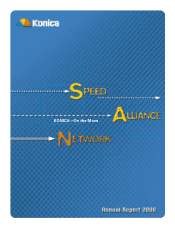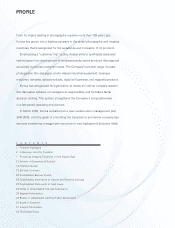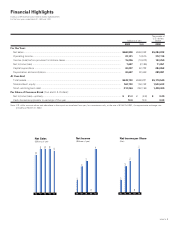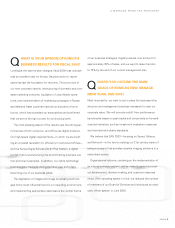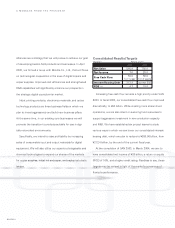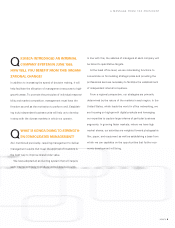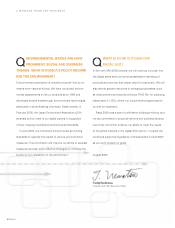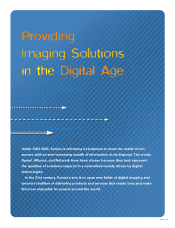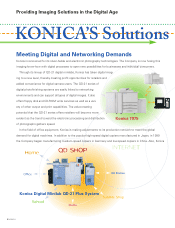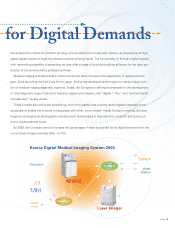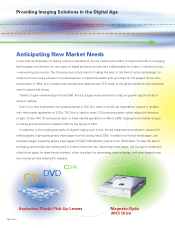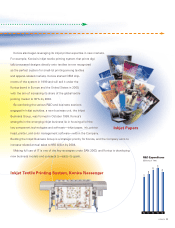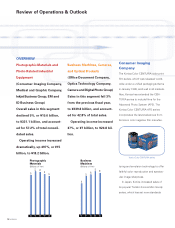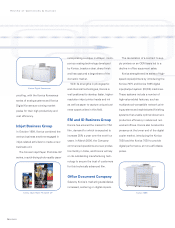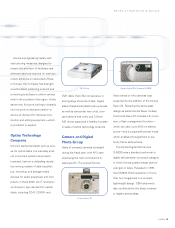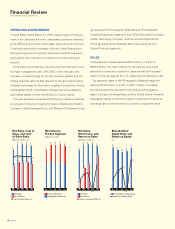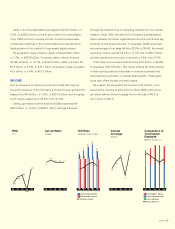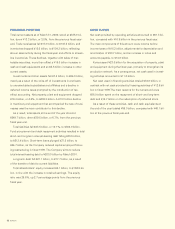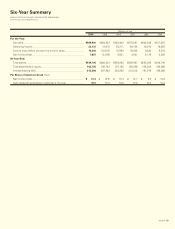Konica Minolta 2000 Annual Report Download - page 11
Download and view the complete annual report
Please find page 11 of the 2000 Konica Minolta annual report below. You can navigate through the pages in the report by either clicking on the pages listed below, or by using the keyword search tool below to find specific information within the annual report.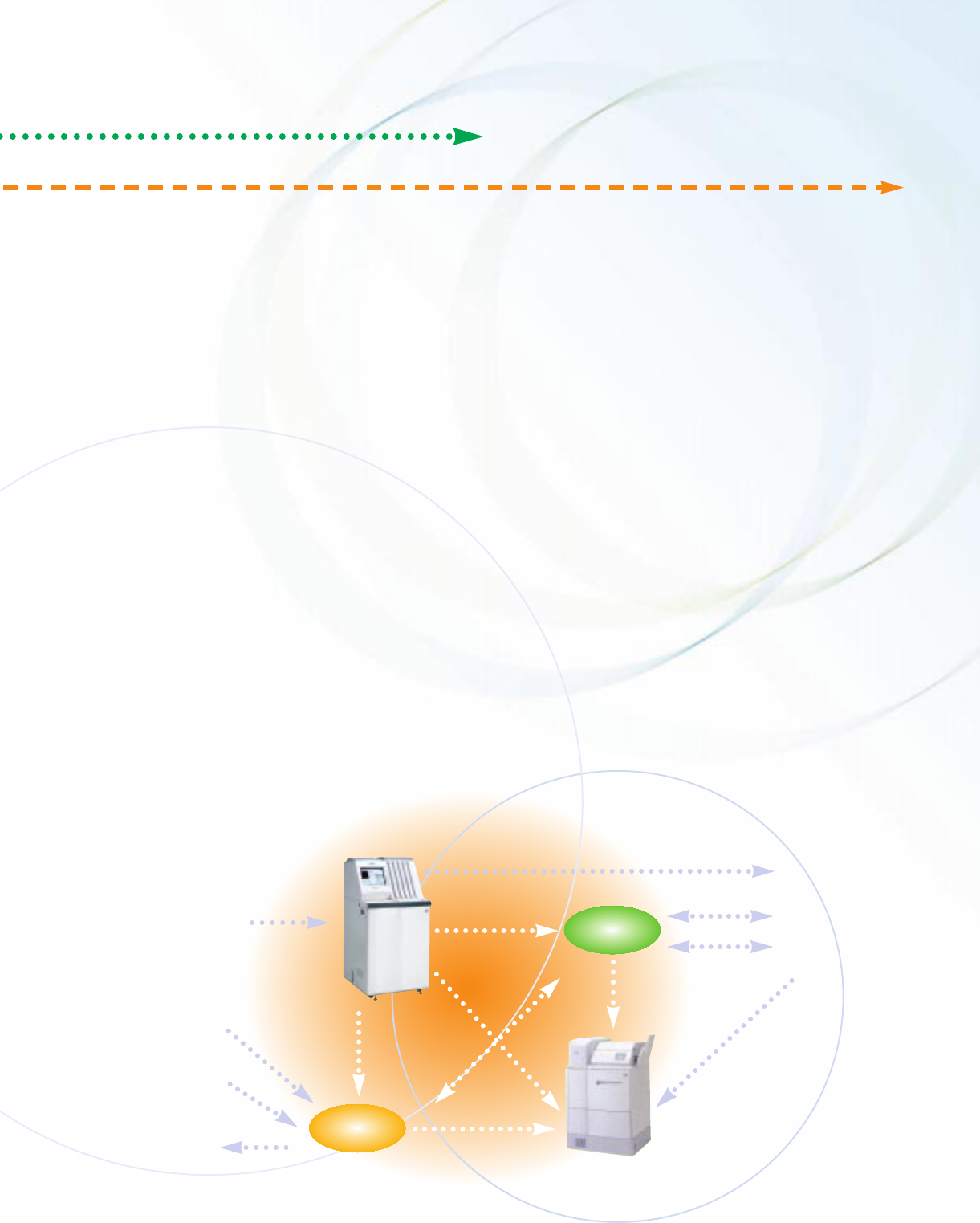
KONICA 9
s for Digital Demands
CT
Server
Work
Station
MRI
DICOM
Imager
Reception
Konica Digital Medical Imaging System 2000
Laser Imager
REGIUS
Print Link
(Interface)
Visical
(Filing)
has entered the market for small-lot printing—the so-called print-on-demand market—by developing its high-
speed digital copiers to meet the diverse small-lot printing needs. The functionality of Konica’s digital copiers
with networking capability is expanding, as they offer a range of document-editing software for the easy pro-
duction of documents with a professional finish.
Medical imaging is another field in which Konica has taken the lead in the application of digital technolo-
gies. Since launching the first X-ray film in Japan, Konica has developed and brought to market a large num-
ber of medical imaging diagnostic systems. Today, the Company is shifting its emphasis to the development
of total diagnostic support solutions based on digital technologies, with “digital,” “dry,” and “environmental
consideration” as key words.
Today’s media are continually diversifying, and in the graphic arts industry technological innovation must
accelerate to enable the industry to keep pace with other, more modern media. Konica is meeting this chal-
lenge by converging its photographic and electronic technologies in high-definition products that boost out-
put to unprecedented levels.
By 2003, the Company aims to increase the percentage of sales accounted for by digital products from the
current level of approximately 30%, to 70%.

